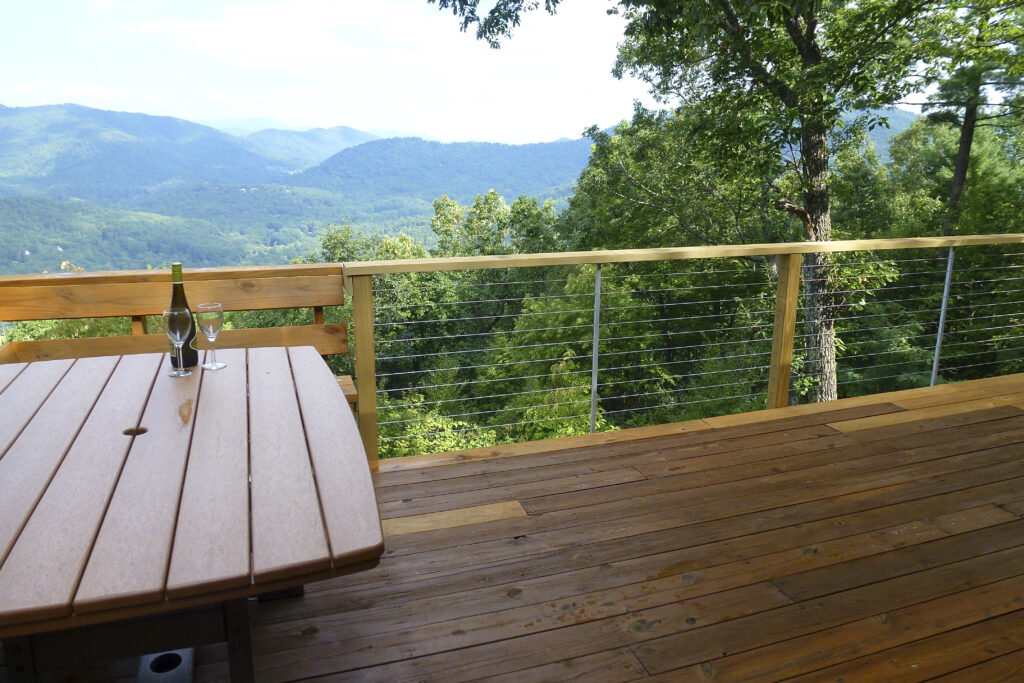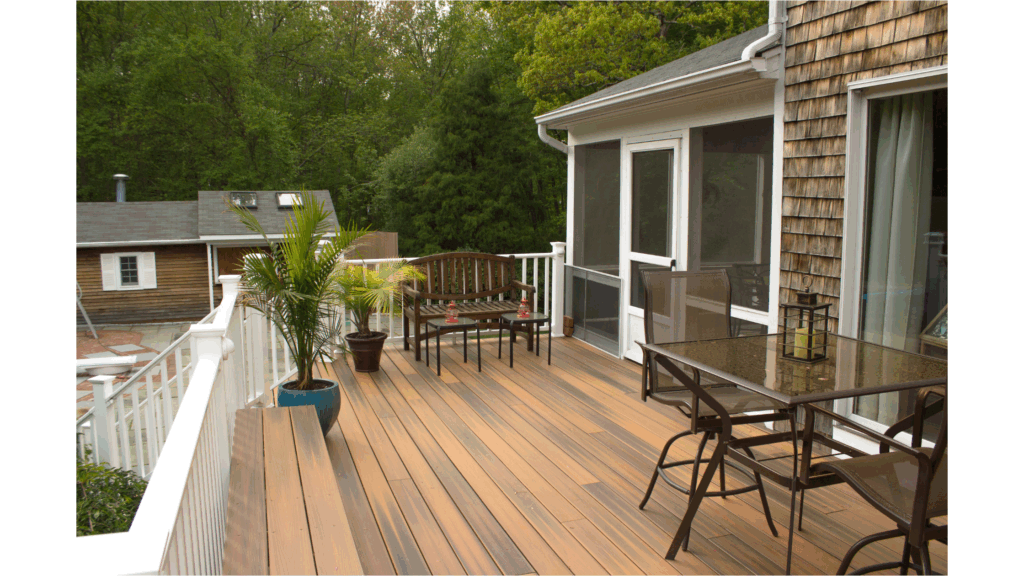
May is Deck Safety Month, and there’s no better time to assess your outdoor oasis before peak sun season. With over 60 million decks in the United States, experts suggest that over half are past their useful life.
Because they’re typically exposed to the elements, decks take the brunt of weather extremes. Regular inspections are necessary to ensure stable structural elements and a smooth, splinter-free surface. They allow owners to prevent major safety issues and premature replacement.
The North American Deck and Railing Association (NADRA) created Deck Safety Month to educate builders and homeowners about critical safety concerns. Their collection of resources is valuable, and we’ve gathered some of our own as well!
In this article, we’ll cover some of the most common issues with wood decks, how to perform an inspection, and some easy maintenance tips. For most deck issues, you can DIY, but we’ll help you know when to call in the pros.

For those of us who enjoy outdoor living, a deck is essential. Done correctly, it can expand interior living space and provide room for entertaining and basking in nature. However, just like roofs, fences, and siding, decks have a lifespan. Typically, homeowners can expect between 10 and 30 years for untreated wood, and up to 50 years for treated or engineered products.
This only tells part of the story, though. Underneath the surface, deck joists and beams can degrade over time, creating an unsafe environment. In areas with regular snowfall, the weight of seasons adds up. According to the experts, heavy snow loads stress the structure, and regular evaluation is essential.
With nearly half of residential decks reaching their twilight years, it’s high time to inspect your deck. You’ll protect your home investment, your family and friends, and your peace of mind heading into the summer.
Before you start grilling out and enjoying your outdoor space, it’s a good idea to see if you need to do any deck maintenance. Some areas are visible at a glance, while others lie below the surface. We recommend hiring a professional to assess the structural integrity of older decks or new-to-you decks.
Here’s a general checklist for pre-season deck safety inspections.
Spending time and money ensuring your deck is in good shape provides peace of mind and increases the life of your deck. Bringing in a professional for annual inspections is good practice for larger, more complex decks. Most will also provide a quote for necessary repairs and a timeline to prepare you to enjoy the summer sun.

Maintaining your deck should be an annual event. After harsh winter weather and spring showers, cleaning and refinishing your deck can make a significant difference in its life.
Start with cleaning your deck. Remove any debris and visually inspect as you go for damaged or loose fasteners. If the surrounding deck material isn’t damaged, you can just replace the fastener. You should replace damaged boards as necessary.
Treated wood decks can be pressure-washed, but make sure you’re using the lowest PSI possible with your pressure washer. If you set the pressure too high, you can end up causing severe damage.
You have several options to prolong the life of your wooden deck boards by staining, sealing, or painting them. Rich stains and paint can add color to a pressure-treated deck while sealants act as a protective barrier.
Refinishing your deck every 2 to 3 years might seem like a big investment, but it’s the best way to prevent moisture and UV damage to your deck. Composite and PVC deck materials need less maintenance, and you can’t stain them or refinish them like treated wood.
Decks are designed to drain water, and proper deck board spacing and moisture management make a difference. Install a gutter system to move water away from deck foundations if necessary.
Airflow helps to dry out wet spots around your deck. Experts recommend at least 18 inches of open space below your deck for proper ventilation. Even sealed deck boards absorb and release moisture, and a good air flow allows them to move uniformly.
To protect joists and deck boards, use products like Grip-Rite® Copper Flashing and Termite Shield. It prevents moisture infiltration and prolongs the life of your deck.
Beyond basic structural elements, there are other ways to upgrade your deck and increase user safety. Building codes dictate many aspects, while others are more common-sense solutions that enhance the look and feel of your deck.
Deck lighting is a significant improvement that helps transition between indoor and outdoor living space. Homeowners can install a permanent lighting system or take a less invasive approach to the process. LED fixtures, string lights, and solar lights are all DIY friendly and straightforward to install. Architectural lighting solutions require a professional, but can be worth the investment for a high-end look.
To reduce the chances of slipping around stairs, consider anti-slip solutions like granulated deck coating, tread tape, and decking strips. Pair these with code-compliant railings for enhanced safety. If you have small children or elderly family members, consider adding a secondary railing.
For a clean, snag-free finish to your deck using grooved deck boards, consider using hidden deck fastening options like Grip-Rite Ninja®. A comprehensive system of starter clips, hidden deck clips, and a stabilizing tool makes installing a new surface fast and easy.
Ensuring deck safety is one of the best ways to set yourself up for a summer of enjoyment. With regular maintenance and cleaning, you can prolong the life of your deck and enjoy it for years to come.
Use Grip-Rite outdoor fasteners for reliable and durable performance when repairs are necessary. Backed by limited lifetime warranties, they’re the best choice for outdoor projects like decks, gazebos, and more. Find out Where to Buy Grip-Rite near you!